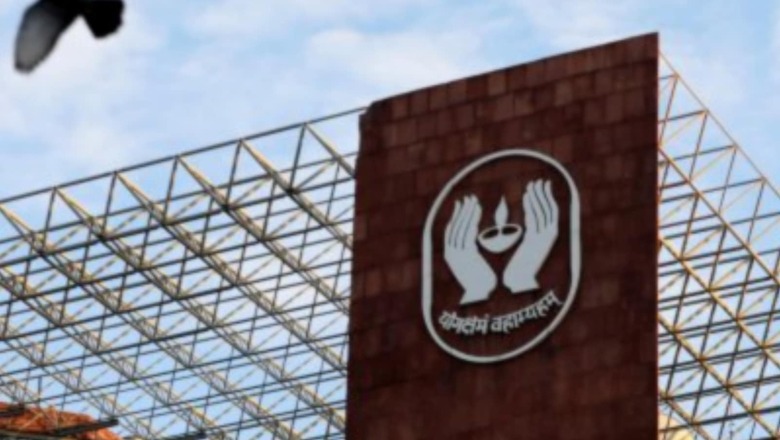
views
As Life Insurance Corporation (LIC) saw its debut listing at discount on stock markets on Tuesday, its market capitalisation (m-cap) has fallen by about Rs 47,000 crore to Rs 5.53 lakh crore as compared with the valuation of over Rs 6 lakh crore at its issue price. However, the company has still become the fifth largest in India in terms of market capitalisation at the current share price.
The company’s shares on Tuesday closed Rs 73.55, or 7.75 per cent, lower to Rs 875.45 as compared with the issue price of Rs 949 per scrip.
With the current market cap of Rs 5,53,721.92 lakh crore, Life Insurance Corporation is the fifth-largest company in terms of valuation. In the ranking of top-10 firms, Reliance Industries (Rs 17,12,023.67 crore) remained the most valued firm, followed by Tata Consultancy Services (Rs 12,63,177.71 crore), HDFC Bank (Rs 7,29,464.56 crore), Infosys (Rs 6,38,869.36 crore) and LIC (Rs 5,53,721.92 crore).
Hindustan Unilever’s market capitalisation currently stands at sixth position with a Rs 5,27,530.23-crore valuation, followed by ICICI Bank (Rs 4,93,752.60 crore), State Bank of India (Rs 4,17,091.72 crore), HDFC (Rs 3,97,233.71 crore) and Bharti Airtel (Rs 3,88,588.39 crore).
LIC’s shares on Tuesday opened at a discount of 8.61 per cent at Rs 867.20 apiece on the BSE. It touched a low of Rs 860.10 during the early trade before swinging back and touching its day’s high of Rs 920 per share. Finally, the company ended the day at Rs 875.45 per share, which was 7.75 per cent lower than the issue price of Rs 949 per scrip.
“LIC listed at a discount as suspected. 2 crore shares, about 10 per cent of the issue, sold and bought in first 15 minutes. Possibly, there is sponsored buying. True value is less than half the issue price. Looks like LIC shares are rushing towards its right valuation,” former finance secretary Subhash Chandra Garg said in a tweet on Tuesday.
The initial public offering (IPO) of LIC witnessed a good response from participants, as it was subscribed 2.95 times on the final day of bidding, with the portion reserved for qualified institutional buyers (QIBs) fully booked.
The bids received were 47.83 crore against the offer size of 16.21 crore. The LIC IPO’s price band was fixed at Rs 902-949 per share and the company offered a discount of Rs 60 per share for its policyholders and Rs 45 apiece for retail investors and LIC employees.
Vinod Nair, head (research) at Geojit Financial Services, said, “The subdued listing of LIC is in line with expectations in context to the drop in market dynamics from the opening of the IPO to the listing date. The listing price has fallen in tandem with the fall of insurance sector valuations, maintaining the discount of about 70 per cent to the industry’s average.”
He added that the stock was brought at the dip and LIC is a decent investment opportunity in the short to medium term considering its strong market presence, improvement in future profitability due to the changes in surplus distribution norms and strong sector growth outlook. “LIC can perform well when we have a bounce in the market and positive performance of the insurance sector.”
What Brokerages Say
Narendra Solanki, head (fundamental research- investment services) at Anand Rathi, said, “Given the market environment right now, I think the LIC listing is decent. Those who had bought the LIC shares for the long term should continue to hold the shares.”
Brokerage firm Macquaire on Tuesday gave a ‘neutral’ stance on Life Insurance Corporation’s stock with a price target of Rs 1,000, which is slightly higher than the IPO price of Rs 949 per share. LIC’s IPO was subscribed nearly three times led by its policyholders and retail investors.
Macquarie Securities’ analyst Suresh Ganapathy noted that LIC has consistently lost market share in the individual business due to the lack of product diversification and excessive focus on single-premium and group business.
Ganapathy also argued that any investor who is investing in LIC is indirectly taking exposure to the domestic equity market given that a large portion of the life insurer’s embedded value consists of marked-to-market unrealized gains from equity investments.
Read all the Latest Business News here




















Comments
0 comment